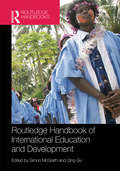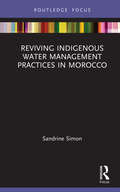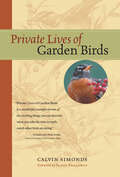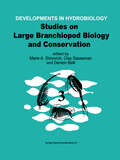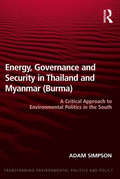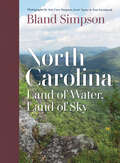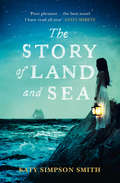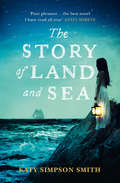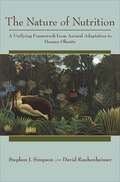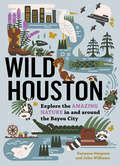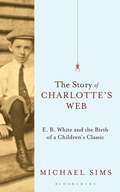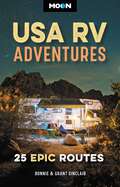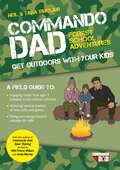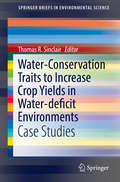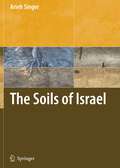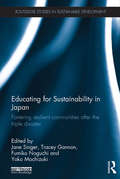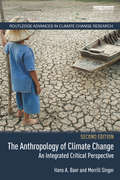- Table View
- List View
Routledge Handbook of International Education and Development (Routledge International Handbooks)
by Simon McGrath & Qing GuThis timely Handbook takes stock of the range of debates that characterise the field of international education and development, and suggests key aspects of a research agenda for the next period. It is deliberately divergent in its approach, recognising the major ideological and epistemological divides that characterise a field that draws on many traditions. Leading and emergent voices from different paradigms and contexts are afforded a space to be heard and each section puts current debates in larger historical contexts. The Handbook is divided in four parts and book-ended by an introduction and a conclusion, the latter oriented towards the implications that the volume has for future research agendas. The first part explores major strands of debates about education’s place in development theory. The second acknowledges the disciplining of the field by the education for all movement and examines the place that learning and teaching, and schools play in development. Part three looks beyond schools to consider early years, adult and vocational education but focuses particularly on the return to thinking about higher education's role in development. The final part considers the changing, but still important, role that international cooperation plays in shaping education in developing countries. Featuring over thirty chapters written by leading international and interdisciplinary scholars, the Routledge Handbook of International Education and Development offers the first comprehensive and forward-looking resource for students and scholars.
Reviving Indigenous Water Management Practices in Morocco: Alternative Pathways to Sustainable Development (Earthscan Studies in Water Resource Management)
by Sandrine SimonThis book demonstrates how Morocco and other semi-arid countries can find solutions to water scarcity by rediscovering traditional methods of water resource management. The book begins by examining indigenous water heritage, considering the contribution of Islam and the mixed influences of Greek and Roman, Middle Eastern, Andalusian and Berber cultures. It then provides a thorough examination of resource management practices in Morocco throughout history, tracing the changing patterns from the instillation of agrarian capitalism in the 19th century, through the Protectorate years (1912–1956), to the 21st century. The book explains how reviving and modernizing traditional methods of water management could provide simple, accessible, and successful methods for addressing 21st century challenges, such as water scarcity and climate change. The work concludes by highlighting how these indigenous practices might be used to provide real-world practical solutions for improving water governance and therefore developing sustainable water management practices. Reviving Indigenous Water Management Practices in Morocco will be of great interest to students and scholars interested in water resource management, indigenous peoples, traditional knowledge, and sustainable development.
Reviving Indigenous Water Management Practices in Morocco: Alternative Pathways to Sustainable Development (Earthscan Studies in Water Resource Management)
by Sandrine SimonThis book demonstrates how Morocco and other semi-arid countries can find solutions to water scarcity by rediscovering traditional methods of water resource management. The book begins by examining indigenous water heritage, considering the contribution of Islam and the mixed influences of Greek and Roman, Middle Eastern, Andalusian and Berber cultures. It then provides a thorough examination of resource management practices in Morocco throughout history, tracing the changing patterns from the instillation of agrarian capitalism in the 19th century, through the Protectorate years (1912–1956), to the 21st century. The book explains how reviving and modernizing traditional methods of water management could provide simple, accessible, and successful methods for addressing 21st century challenges, such as water scarcity and climate change. The work concludes by highlighting how these indigenous practices might be used to provide real-world practical solutions for improving water governance and therefore developing sustainable water management practices. Reviving Indigenous Water Management Practices in Morocco will be of great interest to students and scholars interested in water resource management, indigenous peoples, traditional knowledge, and sustainable development.
Private Lives of Garden Birds
by Calvin SimondsBrimming with stories, wisdom, and expert knowledge, this delightful book gives enthusiasts a peek into the private worlds of eleven North American birds: swallows, blue jays, chickadees, song sparrows, house sparrows, phoebes, mockingbirds, crows, red-winged blackbirds, robins, and hummingbirds. Calvin Simonds shows you how to really observe these birds -- how to interpret the caws of crows, recognize blue jays from their facial markings, understand the flight patterns of swallows. You'll be enthralled as you eavesdrop on a group of sparrows trading songs in a "hootenanny," feel the dry grip of a chickadee's claws on your fingers, tramp through a summer meadow to visit a phoebe, and much more.
Governing Climate Induced Migration and Displacement: IGO Expansion and Global Policy Implications (International Political Economy Series)
by Andrea C. Simonelli GraycarAndrea Simonelli provides the first in-depth evaluation of climate displacement in the field of political science, specifically global governance. She evaluates four intergovernmental organizations (UNHCR, IOM, OCHA and the UNFCCC), and the structural and political constraints regarding their potential expansion to govern this new issue area.
Studies on Large Branchiopod Biology and Conservation (Developments in Hydrobiology #125)
by Marie A. Simovich Clay Sassaman Denton BelkThis volume is a collection of papers concerning the biology of large branchiopod crustaceans: Anostraca, Conchostraca, and Notostraca. Many of the individual papers were first presented at the Third International Large Branchiopod Symposium (ILBS-3) held at the University of San Diego, CA, USA, July 15-18, 1996. Contributions on additional topics from participants at the symposium, and from colleagues not able to join us in San Diego, are also included. In addition, there is a supplement to the 1995 `Checklist of the Anostraca'. The theme of the ILBS-3 was `understanding and conserving large branchiopod diversity'. Researchers from around the world presented papers on a variety of topics related to conservation of large branchiopods, with contributions ranging from alpha-taxonomy and zoogeography to community structure and studies of ecology and evolution. One important issue developed in many of the papers in this volume is the need to advance our understanding of basic aspects of branchiopod biology throughout the world in order to enhance our efforts to conserve them. Although we have made important strides in understanding the biology of large branchiopods, we have, with few notable exceptions, made little progress in assuring the conservation of their diversity. We hope this volume will supply the reader with new ideas, and generate enthusiasm for research and public education efforts on behalf of branchiopod conservation.
Energy, Governance and Security in Thailand and Myanmar: A Critical Approach to Environmental Politics in the South (Transforming Environmental Politics and Policy)
by Adam SimpsonAcross the world states are seeking out new and secure supplies of energy but this search is manifesting itself most visibly in Asia where rapid industrialisation in states such as China and India is fomenting a frantic scramble for energy resources. Due to entrenched societal inequities and widespread authoritarian governance, however, the pursuit of national energy security through transnational energy projects has resulted in devastating impacts on the human and environmental security of local populations. These effects are particularly evident in both Thailand and Myanmar (Burma), which, located at the crossroads of Asia, are increasingly engaged in the cross-border energy trade. Based on extensive fieldwork and theoretical analysis this ground-breaking book proposes a new critical approach to energy and environmental security and explores the important role that both local and transnational environmental movements are playing, in the absence of effective and democratic governments, in providing ’activist environmental governance’ for energy projects throughout the region. By comparing the nature of this activism under two very different political regimes it delivers crucial theoretical insights with both academic and policy implications for the sustainable and equitable development of the South’s natural resources.
Energy, Governance and Security in Thailand and Myanmar: A Critical Approach to Environmental Politics in the South (Transforming Environmental Politics and Policy)
by Adam SimpsonAcross the world states are seeking out new and secure supplies of energy but this search is manifesting itself most visibly in Asia where rapid industrialisation in states such as China and India is fomenting a frantic scramble for energy resources. Due to entrenched societal inequities and widespread authoritarian governance, however, the pursuit of national energy security through transnational energy projects has resulted in devastating impacts on the human and environmental security of local populations. These effects are particularly evident in both Thailand and Myanmar (Burma), which, located at the crossroads of Asia, are increasingly engaged in the cross-border energy trade. Based on extensive fieldwork and theoretical analysis this ground-breaking book proposes a new critical approach to energy and environmental security and explores the important role that both local and transnational environmental movements are playing, in the absence of effective and democratic governments, in providing ’activist environmental governance’ for energy projects throughout the region. By comparing the nature of this activism under two very different political regimes it delivers crucial theoretical insights with both academic and policy implications for the sustainable and equitable development of the South’s natural resources.
North Carolina: Land of Water, Land of Sky
by Bland SimpsonBland Simpson, the celebrated bard of North Carolina's sound country, has blended history, observation of nature, and personal narrative in many books to chronicle the people and places of eastern Carolina. Yet he has spent much of his life in the state's Piedmont, with regular travels into its western mountains. Here, for the first time, Simpson brings his distinctive voice and way of seeing to bear on the entirety of his home state, combining storytelling and travelogue to create a portrait of the Old North State with care and humor. Three of the state's finest photographers come along to guide the journey: Simpson's wife and creative partner, Ann Cary Simpson, professional photographer Scott Taylor, and writer and naturalist Tom Earnhardt. Their photos, combined with Simpson's rich narrative, will inspire readers to consider not only what North Carolina has been and what it is but also what we hope it will be. This book belongs on the shelf of longtime residents, newcomers, and visitors alike.
The Story of Land and Sea
by Katy Simpson SmithA lyrical and spellbinding story of love, loss, and war from a standout new voice in fiction. Katy Simpson Smith has already been acclaimed as an ‘heir apparent to to Michael Ondaatje and Marilynne Robinson’
The Story of Land and Sea
by Katy Simpson SmithA lyrical and spellbinding story of love, loss, and war from a standout new voice in fiction. Katy Simpson Smith has already been acclaimed as an ‘heir apparent to to Michael Ondaatje and Marilynne Robinson’
The Nature of Nutrition: A Unifying Framework from Animal Adaptation to Human Obesity
by Stephen J. Simpson David RaubenheimerNutrition has long been considered more the domain of medicine and agriculture than of the biological sciences, yet it touches and shapes all aspects of the natural world. The need for nutrients determines whether wild animals thrive, how populations evolve and decline, and how ecological communities are structured. The Nature of Nutrition is the first book to address nutrition's enormously complex role in biology, both at the level of individual organisms and in their broader ecological interactions. Stephen Simpson and David Raubenheimer provide a comprehensive theoretical approach to the analysis of nutrition--the Geometric Framework. They show how it can help us to understand the links between nutrition and the biology of individual animals, including the physiological mechanisms that determine the nutritional interactions of the animal with its environment, and the consequences of these interactions in terms of health, immune responses, and lifespan. Simpson and Raubenheimer explain how these effects translate into the collective behavior of groups and societies, and in turn influence food webs and the structure of ecosystems. Then they demonstrate how the Geometric Framework can be used to tackle issues in applied nutrition, such as the problem of optimizing diets for livestock and endangered species, and how it can also help to address the epidemic of human obesity and metabolic disease. Drawing on a wealth of examples from slime molds to humans, The Nature of Nutrition has important applications in ecology, evolution, and physiology, and offers promising solutions for human health, conservation, and agriculture.
The Nature of Nutrition: A Unifying Framework from Animal Adaptation to Human Obesity
by Stephen J. Simpson David RaubenheimerNutrition has long been considered more the domain of medicine and agriculture than of the biological sciences, yet it touches and shapes all aspects of the natural world. The need for nutrients determines whether wild animals thrive, how populations evolve and decline, and how ecological communities are structured. The Nature of Nutrition is the first book to address nutrition's enormously complex role in biology, both at the level of individual organisms and in their broader ecological interactions. Stephen Simpson and David Raubenheimer provide a comprehensive theoretical approach to the analysis of nutrition--the Geometric Framework. They show how it can help us to understand the links between nutrition and the biology of individual animals, including the physiological mechanisms that determine the nutritional interactions of the animal with its environment, and the consequences of these interactions in terms of health, immune responses, and lifespan. Simpson and Raubenheimer explain how these effects translate into the collective behavior of groups and societies, and in turn influence food webs and the structure of ecosystems. Then they demonstrate how the Geometric Framework can be used to tackle issues in applied nutrition, such as the problem of optimizing diets for livestock and endangered species, and how it can also help to address the epidemic of human obesity and metabolic disease. Drawing on a wealth of examples from slime molds to humans, The Nature of Nutrition has important applications in ecology, evolution, and physiology, and offers promising solutions for human health, conservation, and agriculture.
Wild Houston: Explore the Amazing Nature in and around the Bayou City
by Suzanne Simpson John WilliamsThis vibrant, informative guide shows the unexpected and amazing nature in Houston and the surrounding area just waiting to be explored. Houston is more than just a bustling metroplex, it's full of amazing wildlife. You just need to know where to find it! Equal parts natural history, field guide, and trip planner, Wild Houston has something for everyone. This handy yet extensive guide looks at the factors that shape local nature and profiles over 100 local species, from the Barred Owl and the Western Rat Snake to the Houston Burrowing Crayfish, the Rainbow Scareb, and the Nine-banded Armadillo. Also included are descriptions of day trips that help you explore natural wonders on hiking trails, in public parks, and in your own backyard.
The Story of Charlotte's Web: E. B. White and the Birth of a Children's Classic
by Michael SimsWhile composing what would become his most enduring and popular book, Charlotte's Web, E. B. White was obeying that oft-repeated maxim: 'Write what you know.' Helpless pigs, silly geese,clever spiders, greedy rats - White knew all of these characters in the barns and stables where he spent his favourite hours as child and adult. Painfully shy, White once wrote of himself 'this boy felt for animals a kinship he never felt for people'. Nonetheless, that tens of millions have been so moved by Charlotte's Web, and by White's other classics, testifies to his deep understanding of the human condition.Bringing readers into intimate contact with E. B. White's world, Michael Sims chronicles his animal-rich youth and dreams of being a writer; the vibrant early years of the New Yorker,where urban nature was White's ever-present theme; the discovery of the farm in Maine where he and his wife would live; his fascinating scientific research into how spiders spin webs, lay eggs, and live in the world; his friendship with his legendary editor, Ursula Nordstrom; and the luminous creative process that led to publication of his masterpiece.By refining the raw ore of his childhood in Mount Vernon, New York, in the first decade of the twentieth century, White translated his own passions and contradictions, delights and fears, into a book that would be read the world over. The Story of Charlotte's Web illuminates the life of a literary icon, and will add richness and appreciation for anyone who has loved, or has yet to read, a cherished classic.
Two Steps Forward: from the author of The Rosie Project
by Graeme Simsion Anne Buist*THE INTERNATIONAL BESTSELLER*'Charming and absorbing' Daily Mail 'Sleepless in Seattle meets Wild . . . A beautifully crafted tale of love, self-acceptance, and blisters' Sunday ExpressA smart, funny novel of second chances and reinvention from the author of The Rosie Result - two mid-life misfits walk 2,000 km along the Camino de Santiago to find themselves and, perhaps, each other. Zoe, a sometime artist, is from California. Martin, an engineer, is from Yorkshire. Both have ended up in picturesque Cluny, in central France. Both are struggling to come to terms with their recent past - for Zoe, the death of her husband; for Martin, a messy divorce.Looking to make a new start, each sets out alone to walk two thousand kilometres from Cluny to Santiago de Compostela, in northwestern Spain, in the footsteps of pilgrims who have walked the Camino (the Way) for centuries. The Camino changes you, it's said. It's a chance to find a new version of yourself, and a new beginning. But can these two very different people find themselves? Will they find each other? In this smart, funny and romantic journey, Martin's and Zoe's stories are told in alternating chapters by husband-and-wife team Graeme Simsion and Anne Buist. Two Steps Forward is a novel about renewal - physical, psychological and spiritual. It's about the challenge of walking a long distance and of working out where you are going. And it's about what you decide to keep, what you choose to leave behind and what you rediscover along the way.Optioned for film by Ellen deGeneres.
Moon USA RV Adventures: 25 Epic Routes (Travel Guide)
by Bonnie Sinclair Grant SinclairGet inspired and get ready to hit the road with the ultimate guide to America's best RV road trips! Inside Moon USA RV Adventures you&’ll find:25 flexible RV trip itineraries: Gear up for any adventure with road trip loops, ideas for side trips, and strategies for linking routes together The best routes for national parks, historic sites, natural wonders, beaches, and pet-friendly destinations Can't-miss stops from coast to coast: Camp on the beach in the Florida Keys, follow the ruts on the historic Oregon Trail, and wildlife-watch in Yellowstone. Hike in Acadia with your four-legged friend, take in the colorful wind-swept vistas of the Badlands, and enjoy mountain-peak views with your morning cup of coffee in Colorado Delicious local flavors: From lobster rolls to Key lime pie to the red and green chiles of the Southwest, taste your way across the country—whether you dine in restaurants or your RV kitchen Expert advice from seasoned RV-ers Bonnie and Grant Sinclair Comprehensive planning resources: Easy-to-use maps that highlight where you can (and can&’t) drive an RV, nearby grocery stores for each campground, plus tips for health and safety on the road, navigating weather conditions, RV-ing with pets, and minimizing your environmental impact along the way Gorgeous, full-color photos and a fold-out mapRV basics and essential tips like how to pack, how to pick campgrounds, types of RVs, renting an RV, and more From scenic drives and epic hikes to tranquil campground stops, make your home on the road with Moon USA RV Adventures. About Moon Travel Guides: Moon was founded in 1973 to empower independent, active, and conscious travel. We prioritize local businesses, outdoor recreation, and traveling strategically and sustainably. Moon Travel Guides are written by local, expert authors with great stories to tell—and they can't wait to share their favorite places with you. For more inspiration, follow @moonguides on social media.
Commando Dad: Get Outdoors with Your Kids
by Neil Sinclair Tara SinclairThis fully illustrated field guide is loaded with dozens of activities, games and crafts for you and your troops to enjoy in the great outdoors, from forest skills to creative pursuits. These mission briefs are expertly designed to make sure your squad learns valuable skills, stays safe and has a lot of fun. Suitable for ages 3 to 13.
Water-Conservation Traits to Increase Crop Yields in Water-deficit Environments: Case Studies (SpringerBriefs in Environmental Science)
by Thomas R. SinclairThis volume explores specific approaches that have shown to result in crop yield increases. Research on the physiological understanding of these methods has led to the development of practical applications of plant breeding approaches to genetically improve crops to achieve higher yields. Authoritative entries from crop scientists shed new light on two water-conservation traits: one that is based on an initiation of the decrease in transpiration earlier in the soil drying cycle, and the second that is based on a sensitivity of transpiration rate under high atmospheric vapor pressure deficit that results in partial stomatal closure. Both these approaches involve partial stomatal closure under well-defined situations to decrease the rate of soil water loss. Readers will be able to analyze the circumstances under which a benefit is achieved as a result of the water-limitation trait; and key discussion points in the case studies presented will help answer questions such as what species, which environments, how often will yield be benefited for various crop species? Contributions also review the genetic variation for these two traits within each crop species and the physiological basis for the expression of these traits.
International Law and Transboundary Aquifers
by Francesco SindicoGroundwater amounts to 97% of available global freshwater resources. Emphasising the crucial importance of this in the context of increasing population, climate change and the overall global water crisis, Francesco Sindico offers a comprehensive study of the emerging body of international law applicable to transboundary aquifers. Adopting a scenario-based approach, this much-needed book analyses a diverse set of transboundary aquifer agreements and arrangements. With just a handful of such agreements and arrangements around the world, it demonstrates how identifying a normative roadmap for countries that want to begin jointly managing a transboundary aquifer is of paramount importance. Offering an in-depth exploration into the ILC Draft Articles on the Law of Transboundary Aquifers, it provides insight into how this body of law is evolving, and discusses its relation to customary international law. Academics and researchers interested in international water law, environmental law and public international law more widely will find this a unique and compelling work, whilst the book’s practical approach will also make it a useful tool for transboundary aquifer professionals and wider stakeholders working in governments and public bodies dealing with water management around the world.
The Soils of Israel
by Arieh SingerThis book describes the soils of Israel, offering details of their distribution, chemical, physical, and mineralogical characteristics and agricultural attributes. The pathways to the formation of each soil type are discussed against the background of such soil-forming factors as climate, lithology and physiography. The distribution of the different soil types is explained, based on the relationships between soils and soil-forming factors. This the first reference on the topic since 1948.
Quantitative Mineral Resource Assessments: An Integrated Approach
by Donald Singer W. David MenziePolicy makers, mineral exploration experts, and regional planners decide how public lands, which may contain undiscovered resources, should be used or whether to invest in exploration for minerals on a regular basis. Decisions are also made concerning mineral resource adequacy, national policy, and regional development. This book makes explicit the factors that can affect a mineral-related decision so that decision-makers can clearly see the possible consequences of their decisions. Based on work done at the US Geological Survey, the authors address the question of the kinds of issues decision-makers are trying to resolve and what forms of information would aid in resolving these issues. The goal of the process discussed is to offer unbiased quantitative assessments in a format needed in decision-support systems so that consequences of alternative courses of action can be examined with respect to land use or mineral-resource development. An integrated approach focuses on three assessment parts and the models that support them. Although the concepts presented are straightforward and understandable, in assessments, carefully listening to the experts in other disciplines leads to better products. Navigating through and making sense of QRA requires not just learning rules and equations, but life experiences and common sense. The judgment required to understand which tools to apply are best learned by example and experience. This will be useful to governmental or industrial policy makers, managers of explorations, planners of regional development, and similar decision-makers.
Educating for Sustainability in Japan: Fostering resilient communities after the triple disaster (Routledge Studies in Sustainable Development)
by Jane Singer Tracey Gannon Fumiko Noguchi Yoko MochizukiEducating for Sustainable Development (ESD) approaches are holistic and interdisciplinary, values-driven, participatory, multi-method, locally relevant and emphasize critical thinking and problem-solving. This book explains how ESD approaches work in the Japanese context; their effects on different stakeholders; and their ultimate potential contribution to society in Japan. It considers ESD in both formal and informal education sectors, recognizing that even when classroom learning takes place it must be place-based and predicated on a specific community context. The book explores not only ‘Why ESD’, but why and how ESD in Japan has gained importance in the past decade and more recently in the wake of the triple disaster of March 2011. It considers how ESD can help Japan recover and adapt to disasters and take initiative in building more resilient and sustainable communities. This volume asks the questions: What are some examples of positive contributions by ESD to sustainability in Japan? What is the role of ESD in Japan in activating people to demand and work towards change? How can schools, universities and non-governmental organizations link with communities to strengthen civic awareness and community action? After an introduction that elucidates the roots and recent promotion of ESD in Japan, part one of this volume looks at the formal education sector in Japan, while part two examines community-based education and sustainability initiatives. The latter revisits the Tohoku region five years on from the events of March 2011, to explore recovery and revitalization efforts by schools, NGOs and residents. This is an invaluable book for postgraduate students, researchers, teachers and policy makers working on ESD.
Educating for Sustainability in Japan: Fostering resilient communities after the triple disaster (Routledge Studies in Sustainable Development)
by Jane Singer Tracey Gannon Fumiko Noguchi Yoko MochizukiEducating for Sustainable Development (ESD) approaches are holistic and interdisciplinary, values-driven, participatory, multi-method, locally relevant and emphasize critical thinking and problem-solving. This book explains how ESD approaches work in the Japanese context; their effects on different stakeholders; and their ultimate potential contribution to society in Japan. It considers ESD in both formal and informal education sectors, recognizing that even when classroom learning takes place it must be place-based and predicated on a specific community context. The book explores not only ‘Why ESD’, but why and how ESD in Japan has gained importance in the past decade and more recently in the wake of the triple disaster of March 2011. It considers how ESD can help Japan recover and adapt to disasters and take initiative in building more resilient and sustainable communities. This volume asks the questions: What are some examples of positive contributions by ESD to sustainability in Japan? What is the role of ESD in Japan in activating people to demand and work towards change? How can schools, universities and non-governmental organizations link with communities to strengthen civic awareness and community action? After an introduction that elucidates the roots and recent promotion of ESD in Japan, part one of this volume looks at the formal education sector in Japan, while part two examines community-based education and sustainability initiatives. The latter revisits the Tohoku region five years on from the events of March 2011, to explore recovery and revitalization efforts by schools, NGOs and residents. This is an invaluable book for postgraduate students, researchers, teachers and policy makers working on ESD.
The Anthropology of Climate Change: An Integrated Critical Perspective (Routledge Advances in Climate Change Research)
by Merrill Singer Hans A. BaerIn addressing the urgent questions raised by climate change, this book provides a comprehensive overview of the anthropology of climate change, guided by a critical political ecological framework. It examines the emergence and slow maturation of the anthropology of climate change, reviews the historic foundations for this work in the archaeology of climate change, and presents three alternative contemporary theoretical perspectives in the anthropology of climate change. This second edition is fully updated to include the most recent literature published since the first edition in 2014. It also examines a number of new topics, including an analysis of the 2014 American Anthropological Association’s Global Climate Change Task Force report, a new case study on responses to climate change in developed societies, and reference to the stance of the Trump administration on climate change. Not only does this book provide a valuable overview of the field and the key literature, but it also gives researchers and students in Environmental Anthropology, Climate Change, Human Geography, Sociology, and Political Science a novel framework for understanding climate change that emphasizes human socioecological interactions.
